One of the best things you can do with your kitchen and garden waste is to build a compost pile. It is a great way to dispose of organic refuse and will provide you with a powerful fertilizer completely free of charge.
If you want to give it a go, here’s a beginner’s guide on how to start composting.
Why start a compost pile?
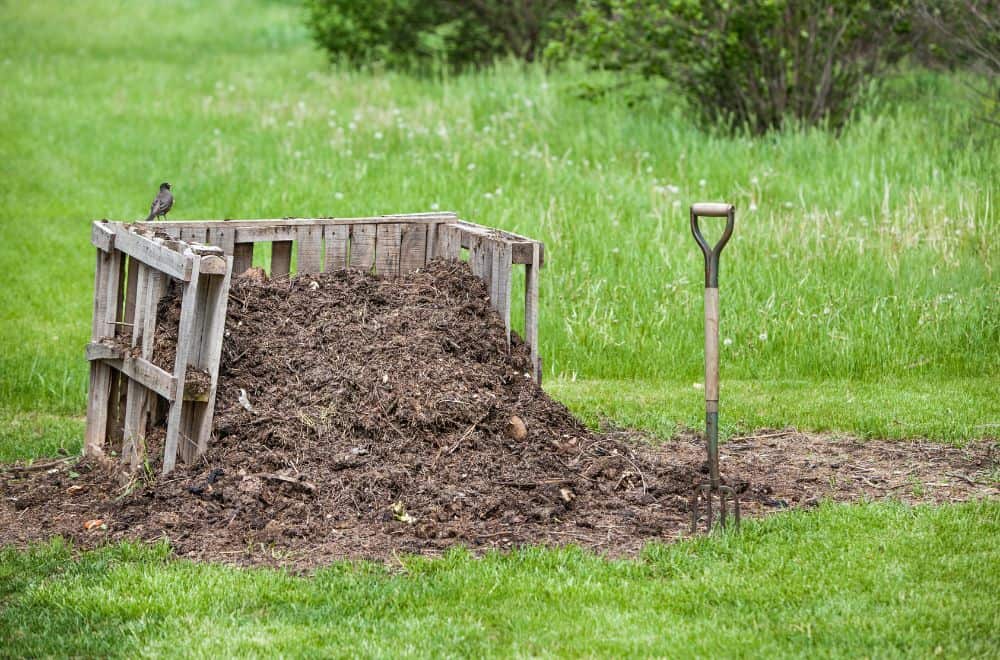
Starting and maintaining a compost pile is very simple. Once your pile is established, it’s pretty hard to go wrong – but why would you want to have one in the first place?
In fact, there are a number of real benefits to having a compost pile, and as long as you have the space to keep one, there’s every reason why you should do it.
The benefits include:
Creates natural soil conditioner by turning waste into humus
By turning waste into compost, you create humus, the result of the breakdown of organic matter into a component of soil. It contributes to the retention of moisture and nutrients.
Turn waste into natural fertilizer as an alternative to chemicals – for free
Compost itself is also rich in nutrients and is powerful natural fertilizer. It is an excellent alternative to chemical fertilizers and won’t cost you anything. You can use it to help keep your flowers healthy, your lawn thriving or your vegetable garden productive.
Environmentally-friendly way to dispose of kitchen waste
Any organic kitchen waste you throw out will end up in a landfill site. Obviously, the landfill is not a sustainable solution to the problem of waste, but more than this, organic waste in landfill does not have the chance to decompose like compost and so releases a large amount of methane.
As most people are aware, methane is a potent greenhouse gas that contributes significantly to global warming. By composting the kitchen waste, you can turn your trash into something useful for your garden at the same time as helping protect the planet.
Excellent way to recycle garden waste
Rather than discard garden waste like fallen leaves and grass cuttings, you can also put them to use by combining them into your pile. The resulting compost can then be used to enhance your garden.
Understanding the basics
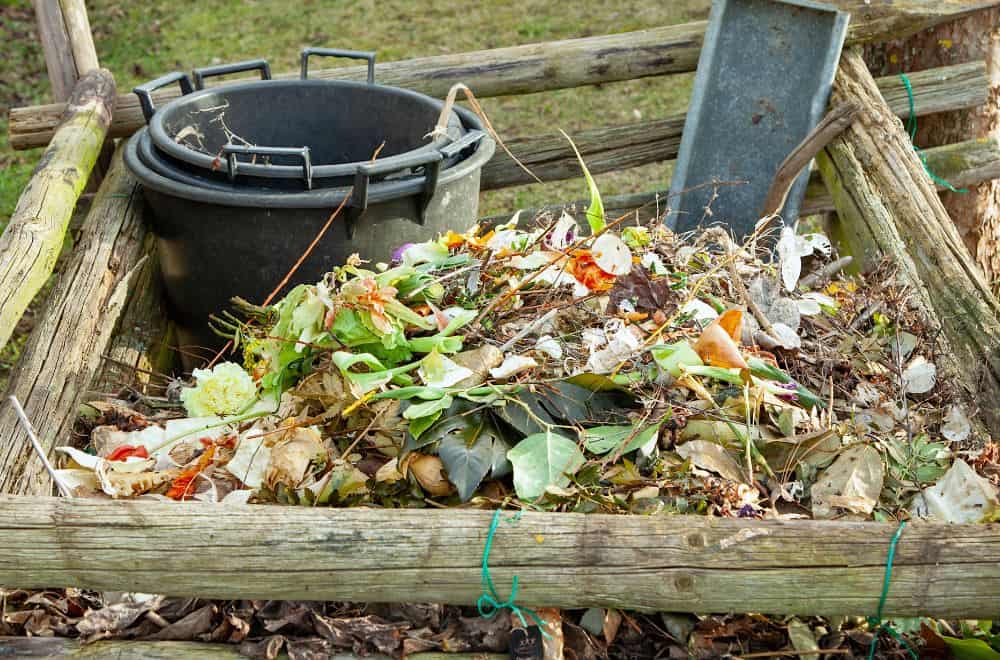
Composting at its most basic level is very simple. Even if you simply throw everything in a big heap in the corner of your yard, some composting is likely to occur. However, your pile may also rotor start to smell bad – or at the very least, it might compost very slowly and inefficiently.
In order to obtain the best quality compost in the shortest amount of time and with the least amount of effort, it is necessary to understand a few of the basic principles behind composting.
Without going too deep into the biology behind the processes, a compost pile needs four ingredients, carbon, nitrogen, air and moisture.
With these four ingredients present, microorganisms like bacteria and fungi will break down the waste into brown crumbly humus that you can use on your garden.
When carbon, nitrogen, oxygen, and moisture are present in the right proportions, the microorganisms break down the material quickly and the center of the pile can reach temperatures of up to 150-160°F.
For this reason, the composition of a compost pile needs to be managed carefully to ensure optimum conditions for the process to take place.
How to start your own pile
Starting your own compost pile at home is very simple; by following these steps, you should soon have your own pile of steaming, nutrient-rich compost with which to fertilize your plants.
1. Choose the most appropriate type
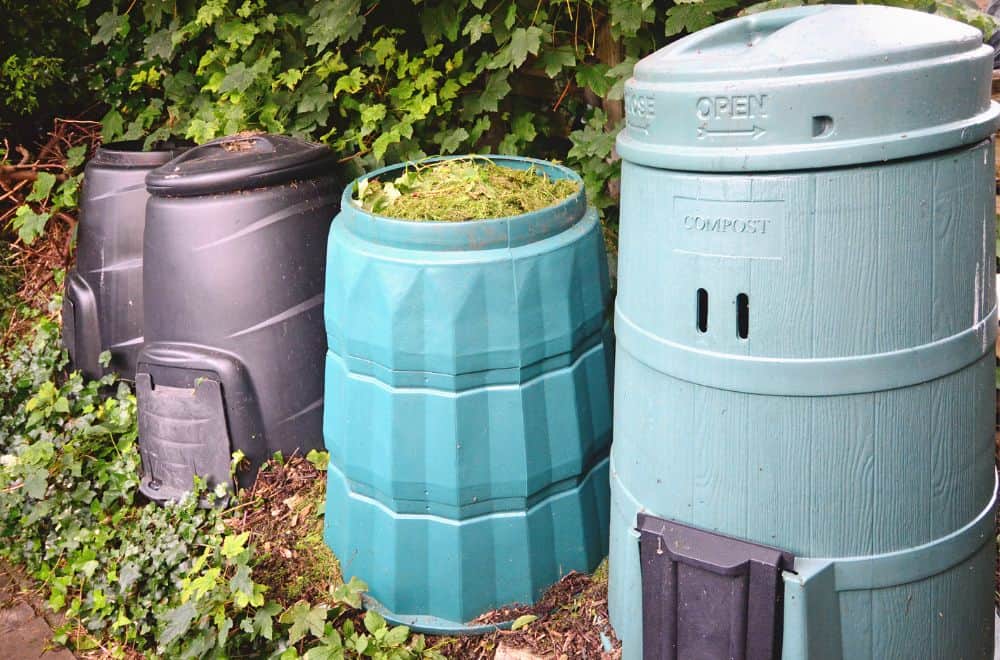
There are several types of compost pile, and the first step is to choose the one most suitable to the conditions where you live. The two main types are enclosed and open.
You can construct a simple enclosed compost pile from a regular heavy-duty bin with holes for aeration. Another type of enclosed composter is a revolving drum; this kind makes it easy to turn the compost.
Enclosed composters can work faster and are also more suitable when space is limited; they are also a good option where unpleasant odors may be a problem. If you live in a suburban area with neighbors in close proximity, a closed pile might be a better option.
An open pile is just that – a pile of organic matter heaped up in a designated part of your yard. These can be bigger and are suitable if you have more space as well as more waste to dispose of. However, they are also vulnerable to scavenging by animals.
2. Set up your pile
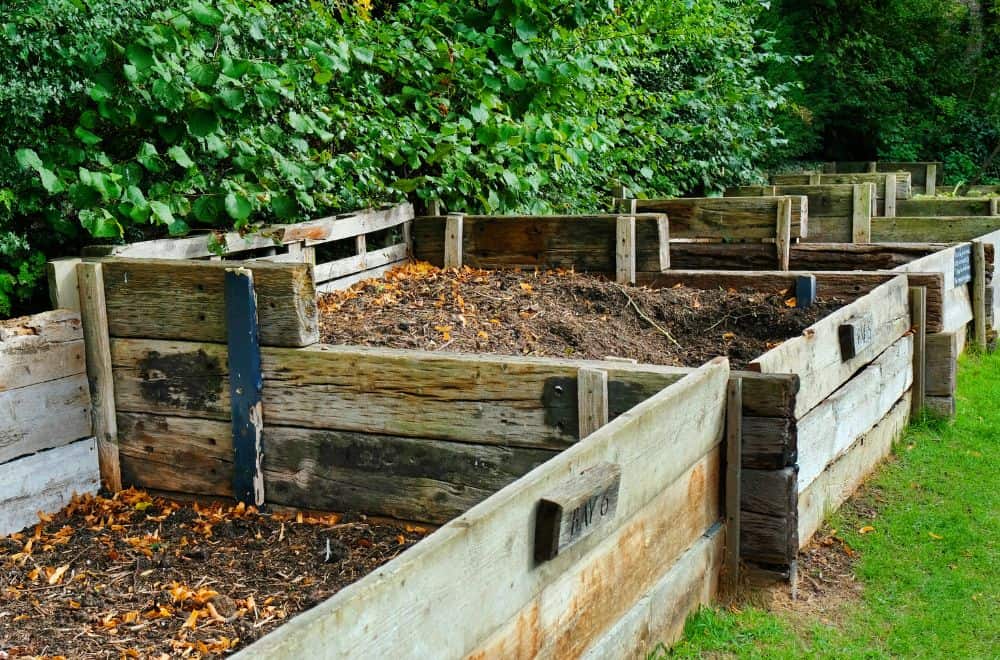
Once you have decided which type of pile you want, you need to choose where it will go. Choose a space that receives sunlight every day; the heat from the sun will help speed up the composting process. If possible, choose an area where the pile will receive some rainwater (if it’s an open pile).
Also, take steps to prevent animals from reaching the pile. You might build a fence around and above it or you might make sure it has an animal-proof lid (if enclosed).
3. Add material
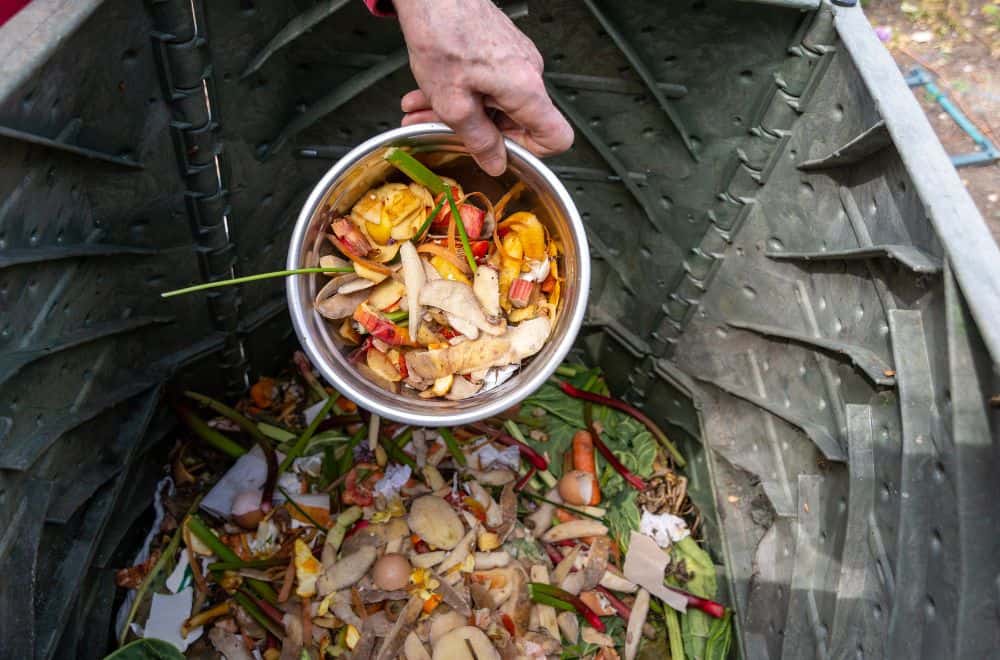
When everything is ready, it’s time to start adding waste material – and this is the most important step for the success of your pile.
A compost pile needs a certain amount of material for the process to start. If you start by simply throwing a few carrot peels and old potatoes down in the corner of your yard, they will just rot. Collect waste beforehand so you have a decent pile to begin with.
If you can start with about three feet high of waste, so much the better.
You can start your pile with some tougher material like twigs and branches underneath. On top of this, you should add material in layers. We mentioned before that two key ingredients are carbon and nitrogen, and this is where you should start monitoring what you put on your pile.
When talking about what goes into a compost pile, we talk about “green matter” and “brown matter”.
Green matter is anything fresh and containing moisture. Green matter is a rich source of nitrogen and includes fruit, vegetables, grass cuttings, green leaves, seaweed and kelp, coffee grounds, tea leaves, and green weeds.
Brown matter brings carbon to your compost pile. Good sources are dry leaves, straw, hay, newspaper, wood chips, sawdust pellets, wood ash, and corn cobs. This provides food for the microorganisms that break the waste into compost.
The key here is finding the right blend since just throwing everything on will not strike the right balance for optimum decomposition. You should aim for about 25-50% green matter and then make up the rest with brown matter.
If the decomposition does not begin or is not fast enough, try adding more green matter; if you find that your compost pile develops a bad smell, try adding more brown matter.
To speed things up, make sure you break larger items up – break up twigs and branches and shred any paper before you add it. This will help avoid clumps developing.
If it is too dry, adding water will also help. If you live in a dry area, water your pile regularly.
4. What not to put on
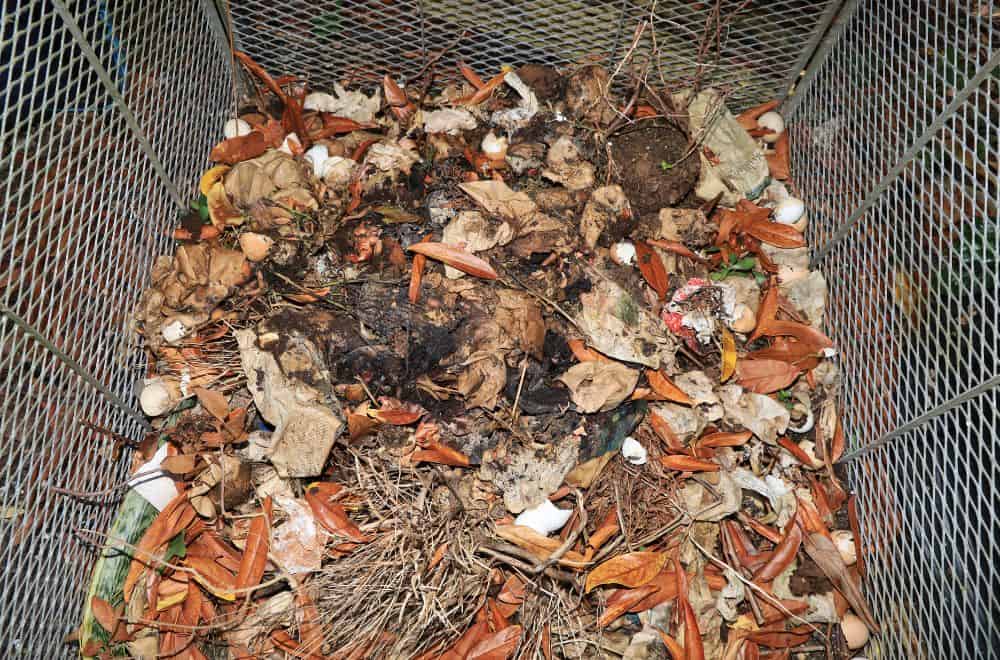
Even though you might be tempted to add all your organic waste to your compost pile, there are a few things you should avoid.
In general, you shouldn’t add leftover meat or other animal products, even bones. The main reason for this is that it is much more likely to attract scavengers like rats or raccoons to your pile.
Meat will also begin to smell bad and may even become a health hazard. For the same reasons, you should also resist the temptation to mix in dairy products.
Another thing to avoid is pet waste. Of course, cat or dog excrement does contain nutrients, but again, it will smell bad and may carry the risk of disease.
Some people believe it is best to avoid including banana skins or peach peel since they may contain traces of pesticides. Some also say that onions and garlic are best avoided since they may discourage earthworms from making a home in your pile – earthworm activity is highly desirable.
Finally, you may wish to not include eggshells since they take a long time to break down. You can help the process by crushing them up before adding them, but you may still find pieces of shell in your otherwise earthy compost.
5. Taking care of your pile
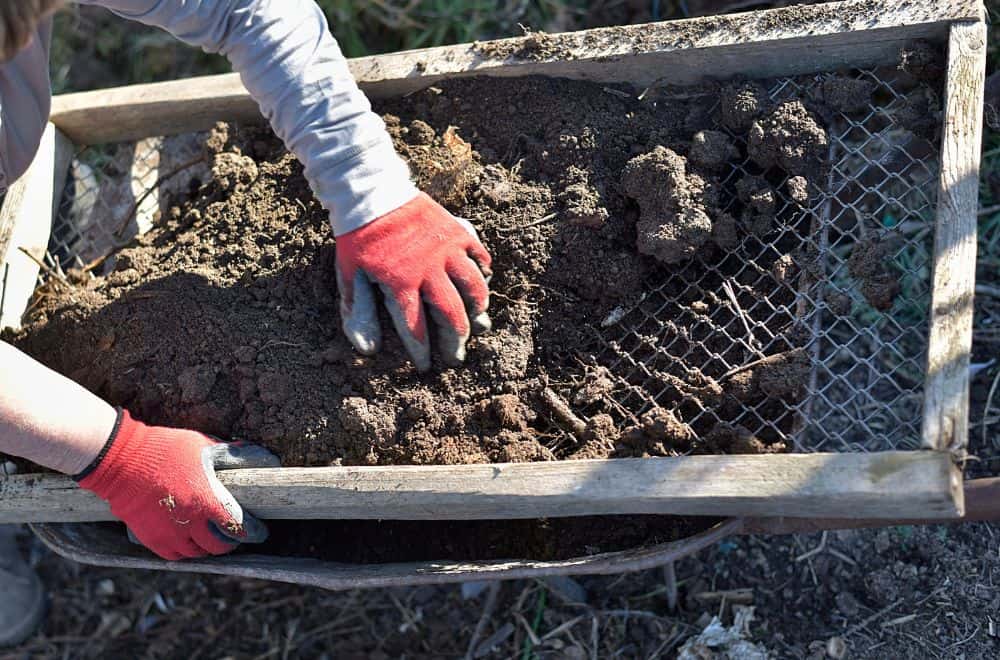
Once your pile is established, you still need to take care of it to achieve the best results.
The most important (and perhaps hardest) part of keeping a compost pile is turning it. This means moving it around with a shovel or pitchfork.
The reason for this is twofold. First, turning your compost is a good way to aerate it. As we have already noted, oxygen or air is one of the four ingredients required for composting, and turning the pile ensures enough oxygen is reaching the decomposing waste.
The other reason is to make sure the pile can decompose evenly. Right in the middle of the pile, the compost can reach relatively high temperatures of up to 150-160°F, almost uncomfortably hot to leave your hand in for any length of time.
By turning the compost, you make sure that the outer layers move towards the center to benefit from the heat generated there by the microorganisms, decomposing into compost as well.
6. Using your compost
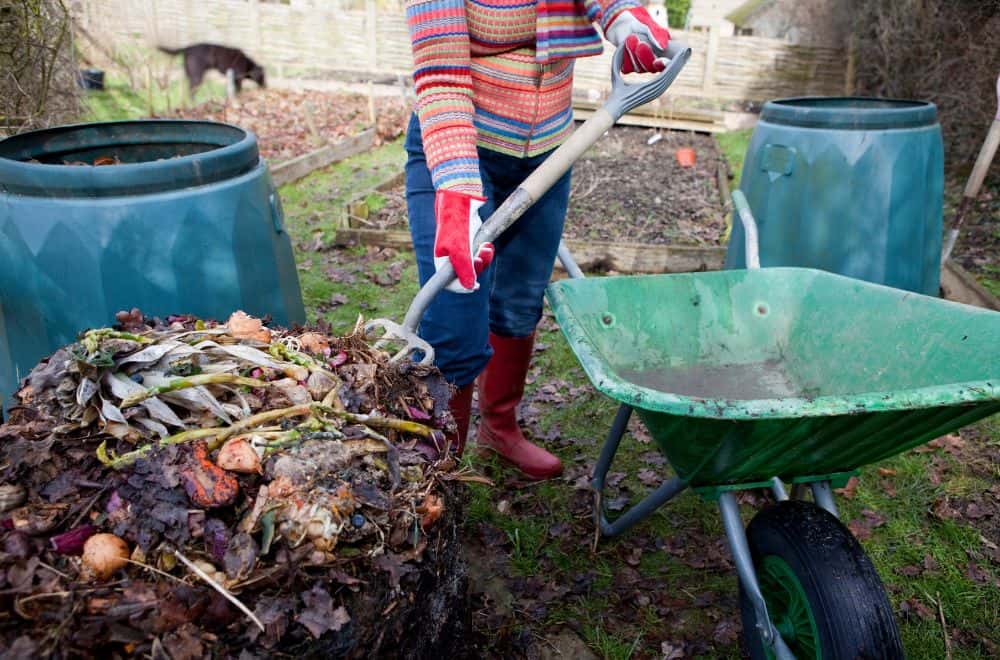
When the process has finished and your compost is ready, it will no longer be generating heat within. By this point, it should have a spongy, soily consistency and an earthy smell. There should be no nasty odor – the smell should actually be quite pleasant for most people.
When the compost reaches this stage, you can spread it over your flowerbeds, use it to nourish your lawn or give it to your vegetables as fertilizer.
Note that compost is not supposed to replace soil but rather to complement it. It adds nutrients to existing soil, but you shouldn’t spread too much at a time. Compost can be a powerful fertilizer so a light sprinkling a couple of times a year should be adequate to obtain the beneficial effects.
Tips for a successful compost pile
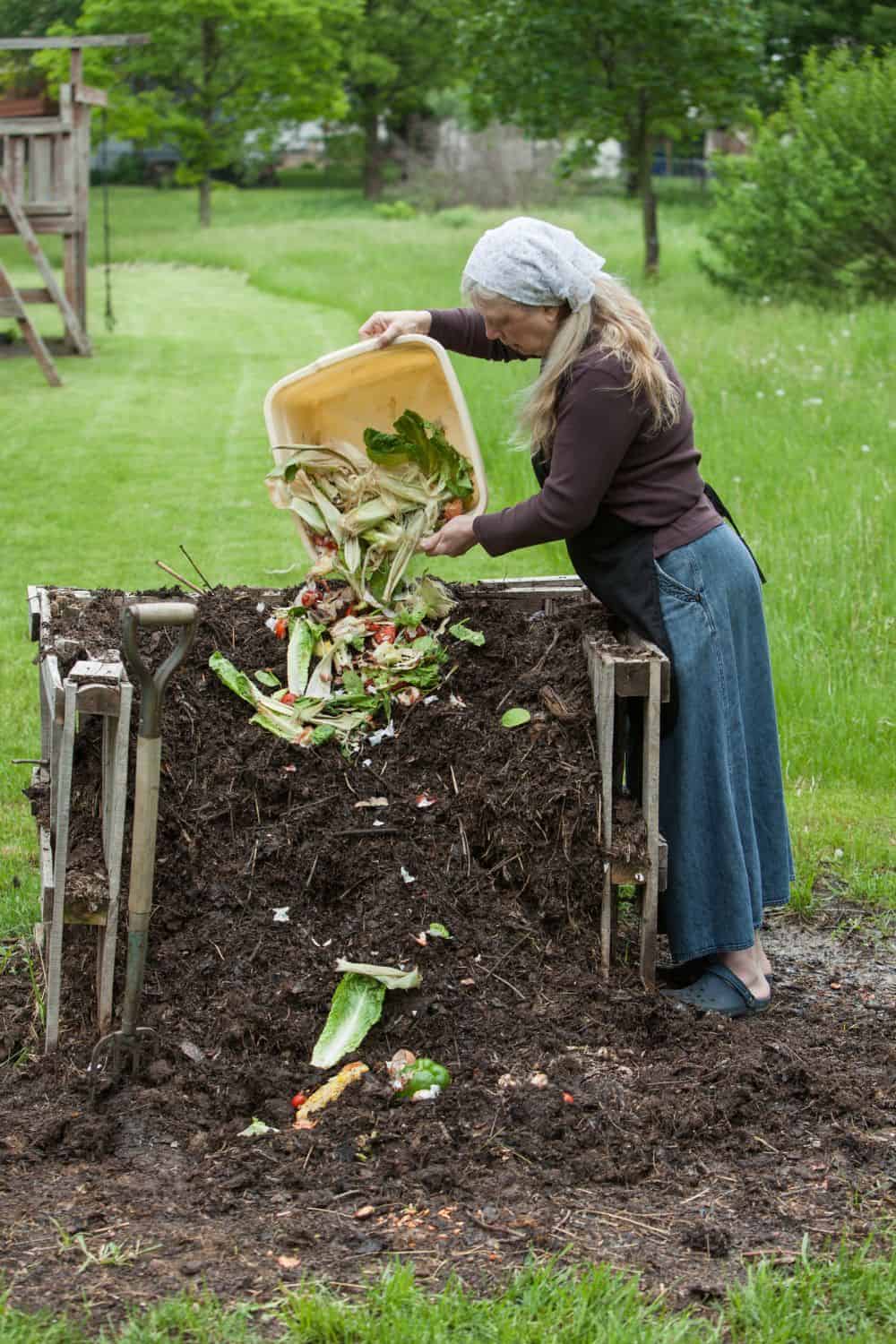
Here are a few tips that will help you manage a successful compost pile that gives you the greatest benefits.
Add new material in layers
If you just pour waste onto the top of your pile, you may end up with clumps or matted areas that don’t break down. To avoid this, add new material in layers. For example, add a fine layer of wood chips, cover it over with grass cutting, add kitchen scraps and then more wood chips, etc.
Cover with grass cuttings to avoid flies
If you find your pile is attracting flies, an easy way to prevent this is to cover each layer with a layer of grass cuttings. Rather than just pouring your cut grass onto the pile, keep a separate pile of cuttings for just this purpose. Every time you add something new, cover over with a layer of grass.
Avoid adding perennial weeds
If you throw weeds onto the pile, you may find that the seeds don’t break down and die. Then when you use the compost to fertilize your garden, the weeds will shoot up in your flowerbeds. The weeds will then be even more rampant because they are now growing in the freshly fertilized soil!
Build a compost pile where you plan to plant in future
The goodness of compost seeps out into the ground below, so if you plan to plant an area in future, building a compost pile there beforehand will super-charge the soil with nutrients. When you remove the pile and start growing things, you will have highly fertile soil.
Build your compost pile and watch your garden grow
There are so many benefits to having a compost pile, including being an excellent way to dispose of waste as well as a free way to give your flowers, vegetables, and lawn a boost. Many people even find they enjoy “feeding” their pile and caring for it – and the benefits from doing so are huge.
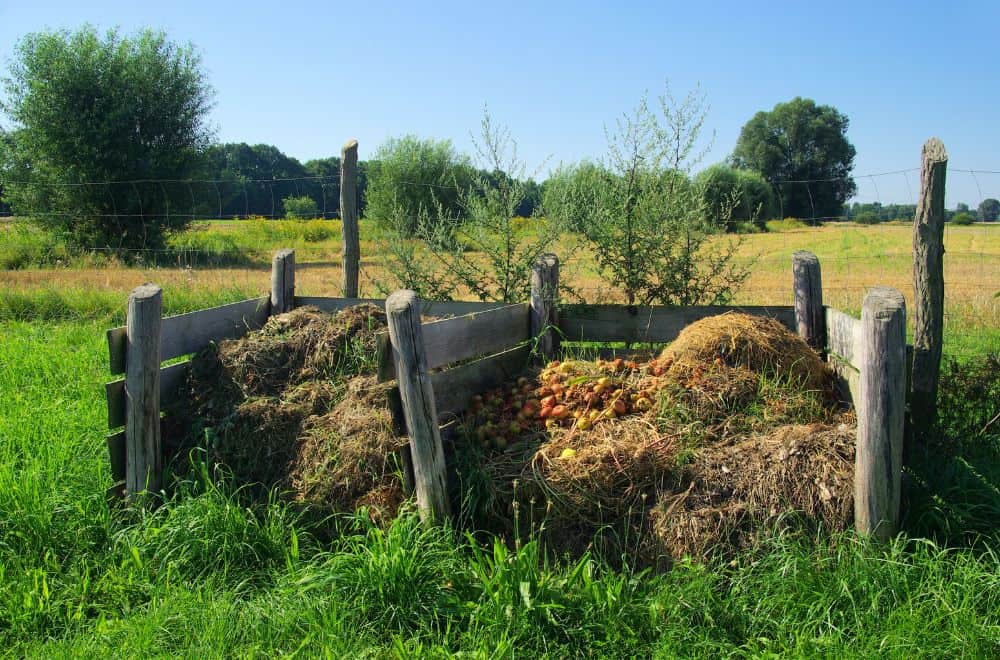
Leave a comment